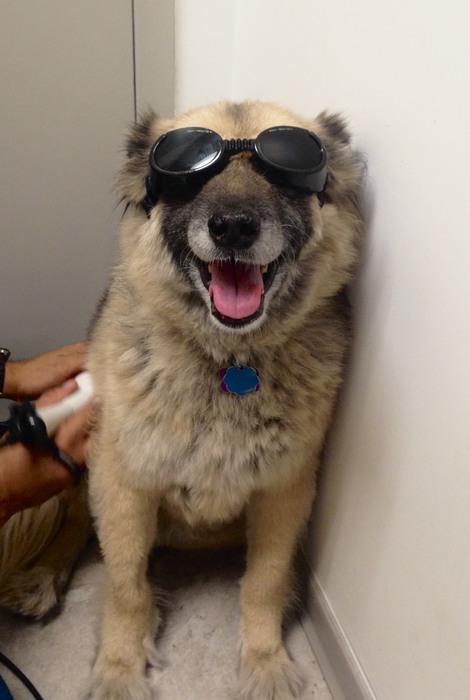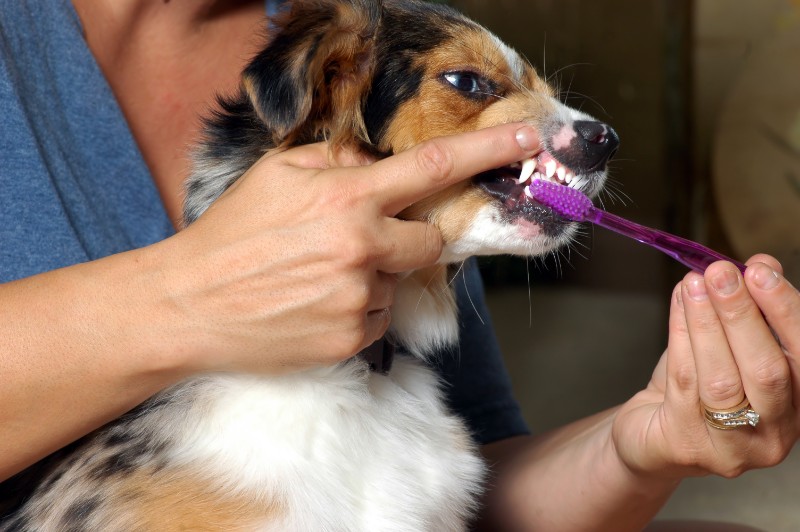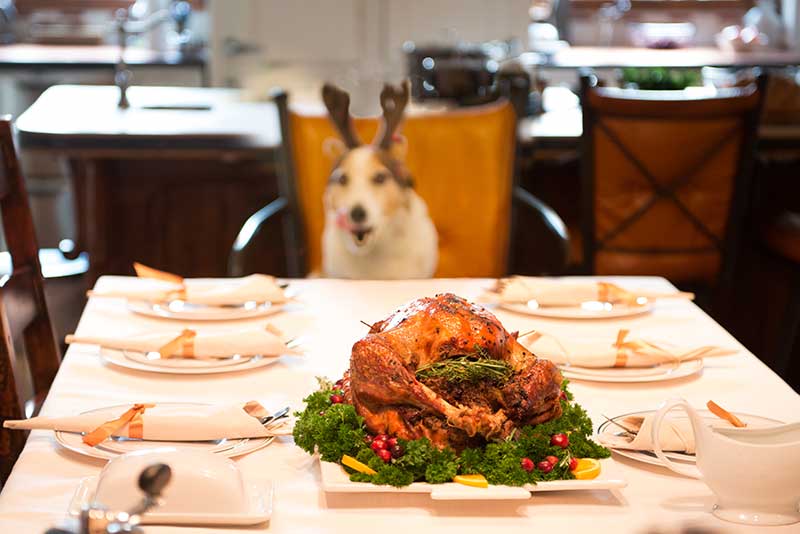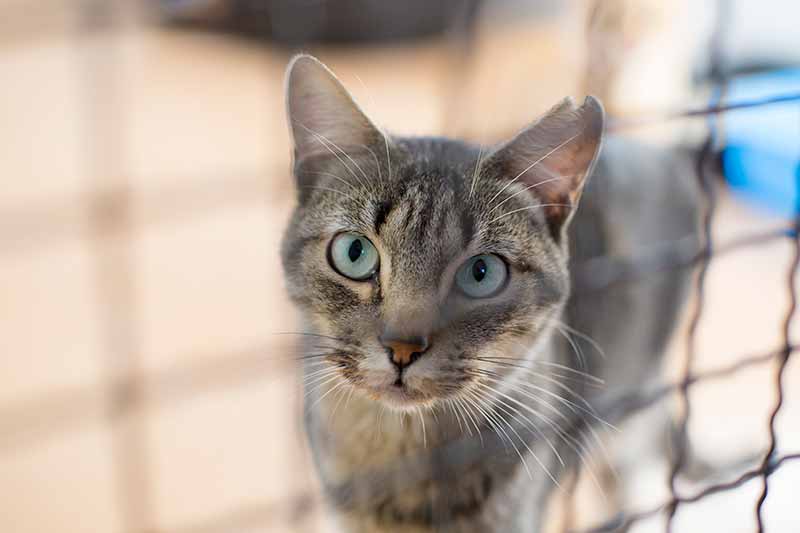Heartworm Disease in Urban Areas: Is it Really a Risk?

Looking at a map of heartworm disease in the U.S., it’s easy to see what a threat this condition poses to our pets. Over the last two decades, the incidence of heartworm disease has jumped an average of 6-25 cases per clinic per year in the New York area. Considering how many animal hospitals there are in our region, these statistics are anything but promising.
The best defense against heartworm disease is the timely administration of preventive medication. Without this, the number of cases each year will continue to grow, leaving our best friends exposed to a range of health problems – including death.
Mosquitoes in Brooklyn
Mosquitoes are an ever-present threat to the health of people and pets in Brooklyn and beyond. Just last summer, the New York City Department of Health sprayed more than a dozen Brooklyn neighborhoods with pesticide in an attempt to control the spread of West Nile Virus. Mosquito traps and water pools tested positive for the disease in 17 Brooklyn zip codes.
Vector-Borne
Mosquitoes transfer heartworm disease from animal to animal. Once an infected mosquito deposits the microscopic worms into the bloodstream of a host, it can take about 3 months for the larvae to develop. Without a heartworm preventive to kill off the worms, larvae will grow inside the blood vessels surrounding the heart and lungs, severely compromising the health of a pet.
Why We Test
We test for heartworm disease during annual exams. Without a negative result, it’s highly dangerous for a pet to start heartworm medication.
Even pets who spend all their time inside should be routinely tested and given a monthly dose year-round. Remember, mosquitoes are extremely pesky and can work themselves inside any apartment or house, exposing pets to the disease.
A Positive Result
Many pets won’t display any symptoms of heartworm disease. Once the worms have matured, however, some dogs may develop a cough or have trouble breathing. It’s also common for pets to lose interest in food and to appear weak or lethargic. A previously excitable pet will become tired after minimal exertion.
Cats may vomit, experience severe coughing spells, and display respiratory distress. Some cats may also die suddenly from heartworm disease.
Treatment vs. Prevention
Heartworm-positive dogs can undergo treatment for heartworm disease, but it’s both expensive and risky. Hospitalization, medications, anti-inflammatories, and cage rest for at least a month are all common treatment protocols. Surgery may even be required to remove heartworms from the heart and lungs.
Unfortunately, cats cannot be treated for heartworm disease.
Preventing heartworm disease is easy. Simply remember to give your pet their monthly dose throughout the whole year. We recommend setting up alerts on your phone or placing stickers on your calendar as a reminder.
Heartworm Disease in the City
Mosquitoes are most active at dawn and dusk. While these times are great for walking your dog in the middle of the summer, be mindful of mosquitoes. Likewise, clean up any standing water on your property and ensure that all windows and door screens are free of holes. Stay up-to-date on your pet’s flea and tick medications, as these can also repel mosquitoes.
Please contact us with any questions or concerns. The team at All Creatures Veterinary Hospital of Brooklyn is always here for you and your pet.
All About Laser Therapy for Pets

Veterinary care has come a long way in the past 20 years. Pets are treated with significantly more respect than in past generations, and treating and managing pain is high on the list of priorities. Advancements in post-operative recovery, chronic pain management, and new options for age-related conditions have significantly improved the lives of modern pets.
Laser therapy for pets is one such treatment modality (also called cold laser therapy, low level laser therapy, and photomodulation therapy). Although laser therapy has been used in human medicine for over 40 years, it’s only just begun to reach its potential in the veterinary world.
The team at All Creatures Veterinary Hospital is excited to share the many benefits of laser therapy with our readers!
Continue…Pesky Parasites: The Importance of Flea and Tick Prevention

Spring fever? Not yet, but it will be here before your know it! Soon you will start seeing flowers in planters, a warm breeze from time to time and definitely more bikes on the road.
Our pets feel this change in the air just as much as we do, and they are usually ready to get outside and enjoy some spring breezes and sunshine, too. But a little extra time outside can also remind us that parasites that live on our pets are ready for warm weather, too.
As we enter peak season for bugs, it’s time to focus on flea and tick prevention so that we can guard against potentially life threatening diseases, health concerns, and major discomfort for your pets and for you! All Creatures Veterinary Hospital of Brooklyn shows you the way.
Continue…Preventing Dental Disease in Pets: An At Home Guide

If you’ve snuggled up on the couch with your pet recently and noticed that their breath was – ahem – less than fresh, it may be time to schedule a pet dental exam. Bad breath is one of the signs of dental disease in pets, a common, but preventable problem.
Dental disease in pets is so common, in fact, that by the time pets are 4 years of age, over 85% of them have some form of periodontal disease.
Unfortunately, pets are very good at hiding signs of pain and discomfort from even their closest people. And make no mistake – dental disease is painful for your pet; aside from bad breath, dental disease in pets can cause swollen, bleeding gums, diseased and infected teeth, tooth loss or fracture, and even systemic disease when bacteria from the mouth enter your pet’s bloodstream.
That’s why All Creatures Veterinary Hospital of Brooklyn believes in prevention. Luckily, dental disease can be controlled and even prevented with a team approach, which includes regular preventive dental exams, regular professional dental cleanings, and regular at home care – including daily tooth brushing.
Here, we’ll show you how.
Continue…All Creatures Veterinary Hospital’s Top 5 Pet Care Blogs of 2018

2018 certainly had its ups and downs, but at All Creatures Veterinary Hospital of Brooklyn, we couldn’t be happier with the past 365 days. It has been a pleasure to serve our wonderful Brooklyn pet community, and each day has given us a chance to grow and give back to each of you.
Speaking of growing, we are thrilled that so many of you are reading our monthly pet care blogs. Writing and publishing the blog has been a privilege and we hope that it’s given you timely, interesting and relevant information about how to keep your pet their healthiest.
With that in mind, we looked at which blogs you found most engaging, and we’ve compiled All Creatures Veterinary Hospital of Brooklyn’s top 5 pet care blogs of 2018 here for your reading pleasure. Enjoy!
More than Just a Present: Adopting a Pet During the Holidays

A quick stroll through any store will reveal the majority of holiday gifts are, unfortunately, disposable. While there are definitely meaningful or useful holiday presents out there, we mostly just enjoy them a few times before they’re relegated to a closet or donation pile.
So, where do pets fit in with all of this? In an effort to spread love and goodness, people commonly like to get a pet this time of year. However, it’s important to keep in mind this doesn’t always have a happy ending. Many people find pet ownership just isn’t a commitment they can make right now (or ever). In other words, adopting a pet is a serious endeavor that requires much consideration before taking the plunge.
Continue…The Grateful Fed: Avoid a Pet Emergency with These Meal Safety Tips

Who can resist a holiday meal? Whether it’s a gravy-covered plate of meat and potatoes or an abundance of buttery rolls and pie crusts, dinner tables this time of year can be really tempting. You don’t even have to be hungry to enjoy everything in front of you! If we feel this way about the holidays, our pets probably do, too. While you don’t have to exclude them entirely, it’s important to observe certain safety tips to prevent a pet emergency this holiday season.
A Cornucopia of Goodness?
As pet owners, the holidays yield many tasty goodies for us, but the same can’t be said for our companions. Without a doubt, the menu items we crave and love the most are also some of the most dangerous for our pets.
While some foods cause only mild irritation, the consumption of others can result in a life-threatening pet emergency.
Continue…Halloween Pet Safety Tips That Keep the Party Going

Pets can participate in all sorts of events around Halloween, including accompanying the kids for trick-or-treating, and even getting all dressed up. But without a proactive approach to the myriad dangers facing animals, they could find themselves in a proverbial cauldron of hot water. Our Halloween pet safety tactics will help you and your pet enjoy the seasonal revelry without a visit to the emergency room.
The Ringleader
Candy is super central to Halloween, of course. Kids and grownups alike simply delight in the various high-sugar and chocolate candies that are in abundance all month long. The bad news is that pets see us enjoying it and when they get a whiff, it’s hard to pass up.
The basic rule of thumb is that candy should never be left out for pets to discover. Keep candy bowls on surfaces that pets cannot see, smell, or reach, or behind closed cupboard doors.
Going one step further, be sure that any backpacks in the house, coat pockets, or purses that may contain a candy or two are always securely stowed away from powerful animal noses.
Why It’s Harmful
Candy poses definite risks to pets, but why, exactly?
- Chocolate – Theobromine and caffeine are the two chemical compounds in chocolate that make it so dangerous for pets. If a pet ingests chocolate, they might have irregular heart rhythm, high blood pressure, vomiting, and diarrhea, but if they ate a great deal of dark chocolate, they might experience seizures and heart failure.
- Raisins – Typically covered in milk chocolate, candy like Raisinets cause lethargy, weakness, abdominal pain, and dehydration (on top of the symptoms of chocolate toxicity).
- Xylitol – This artificial sweetener is ubiquitous in mints, gum, and sugar-free candy. It can also be found in a lot of peanut butter brands. Xylitol can be fatal to dogs and can cause low blood sugar, seizures, or liver failure.
- Wrappers – Foil, plastic, and even wax paper candy wrappers can cause severe gastrointestinal obstructions that require diagnostics like x-rays, ultrasounds, and possibly surgical removal. Likewise, lollipop or candy apple sticks pose choking hazards.
If you know or suspect that your pet ate something they shouldn’t have, please seek emergency help immediately.
Halloween Pet Safety
There are lots of other ways to protect your pet this Halloween, such as:
- Keep them away from glow sticks, electric lights, power cords, animatronic displays, and live flame jack-o’-lanterns.
- Ensure that any costume they have on fits well, but doesn’t block vision, respiration, or movement. Any possible choking hazards (like beads, sequins, etc.) or entanglement risks should be removed. Free your pet as soon as they become distressed.
- Encourage them to stay away from the constantly ringing doorbell. A back bedroom with their favorite bedding, toys, and treats can soothe anxiety related to trick-or-treaters.
- If you’re going out with your pet on Halloween, be sure that they are geared up in reflective gear. Their ID tags should be clearly seen. Please update any changes to the microchip in case you get separated.
If you have any questions or concerns related to Halloween pet safety, our veterinarians and staff at All Creatures Veterinary Hospital are always here for you.
Our Favorite Pet Friendly Spots in Crown Heights and Prospect Heights
 Anyone who’s familiar with Brooklyn knows the unique combination of energy and eclectic charm that characterizes our little corner of the world. Coffee shops, restaurants, bars, parks, and the general sense of community keep residents and guests happy, no matter the weather or time of year.
Anyone who’s familiar with Brooklyn knows the unique combination of energy and eclectic charm that characterizes our little corner of the world. Coffee shops, restaurants, bars, parks, and the general sense of community keep residents and guests happy, no matter the weather or time of year.
Pets can also reap the benefits of our cozy borough. In fact, the number of pet friendly spots to eat and play continues to grow; let the team at All Creatures Veterinary Hospital of Brooklyn share some of our favorites! Continue…
Friends in High Places: Why We Work With These Amazing Local Pet Rescues
 There are many reasons people choose pet rescues. For starters, adopting a rescue is a great way to save a life and help the community. Additional bonuses include the facts that rescues are usually fully grown, come with an already developed personality, and are budget-friendly. What do we mean by that? Well, rescue and shelter pets are typically spayed/neutered, fully vaccinated, dewormed, and microchipped – all at a savings to a prospective pet owner.
There are many reasons people choose pet rescues. For starters, adopting a rescue is a great way to save a life and help the community. Additional bonuses include the facts that rescues are usually fully grown, come with an already developed personality, and are budget-friendly. What do we mean by that? Well, rescue and shelter pets are typically spayed/neutered, fully vaccinated, dewormed, and microchipped – all at a savings to a prospective pet owner.
The Inside Scoop
All Creatures Veterinary Hospital is proud to assist local organizations designed to help animals in need. Among them, Badass Brooklyn Animal Rescue is just one outfit that we’re very proud to align with. As most pet owners can attest to, it’s a huge incentive when an adoptable pet is already spayed or neutered.
This simple fact helps facilitate more adoptions than we can count (not to mention the impact the procedure makes on the community)! To that end, we spay or neuter the pets that Badass is trying to re-home. Continue…

